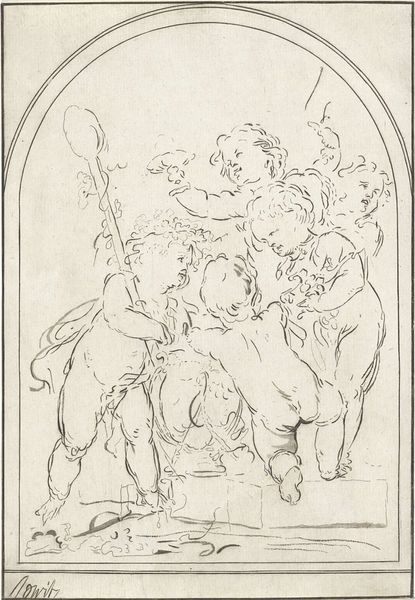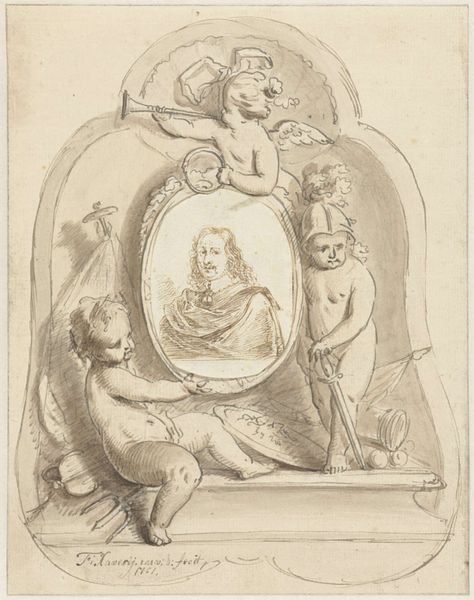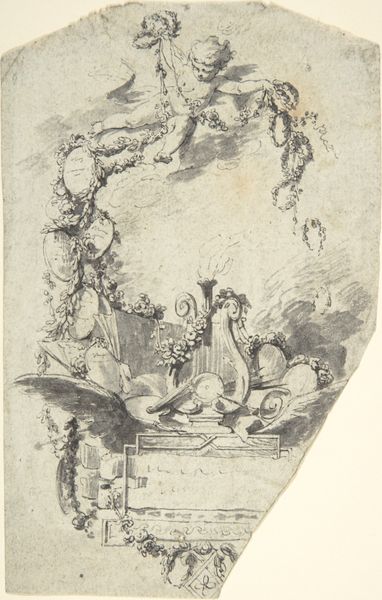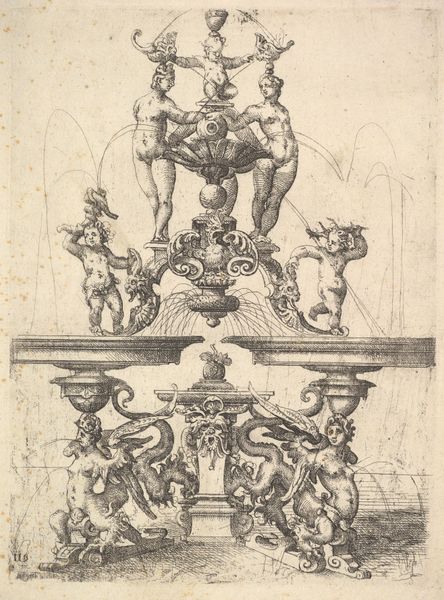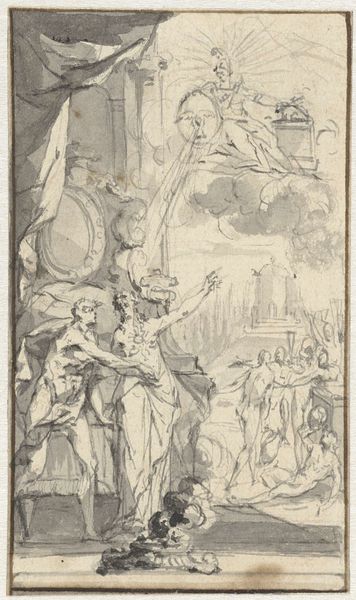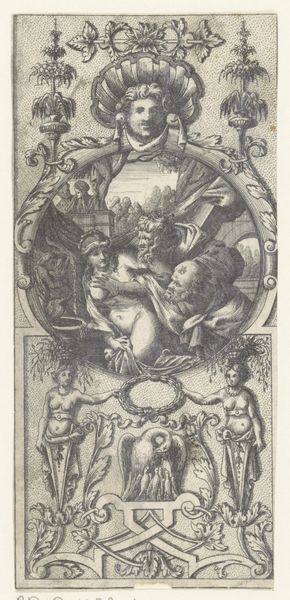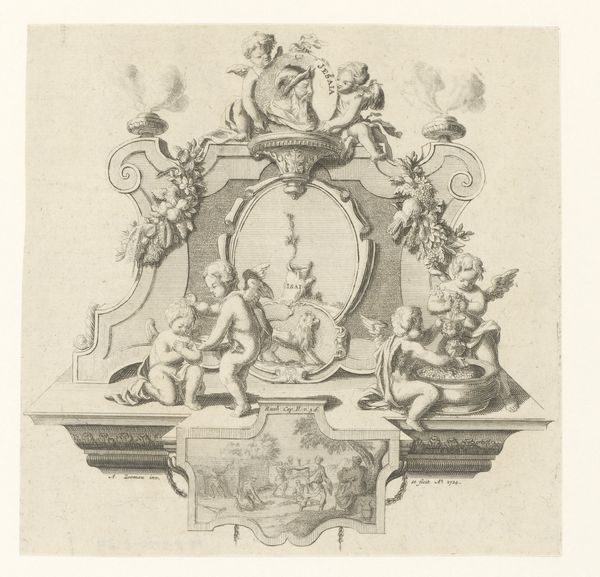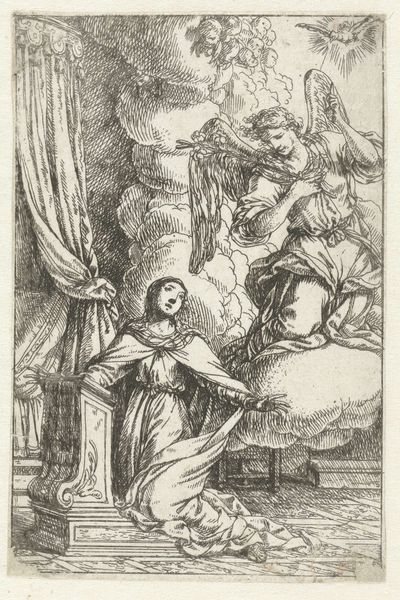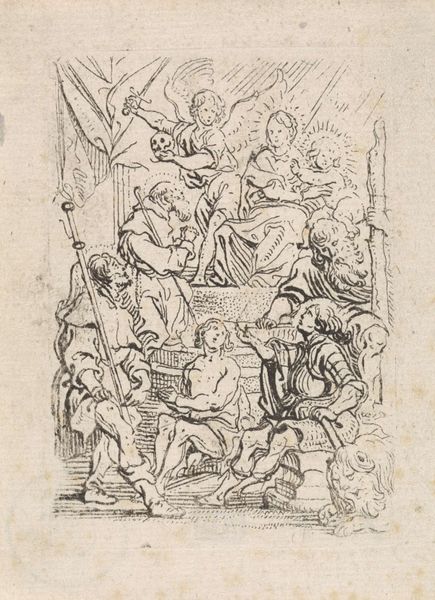
drawing, paper, pencil
#
portrait
#
drawing
#
baroque
#
pen sketch
#
pencil sketch
#
figuration
#
paper
#
pencil
Dimensions: height 218 mm, width 127 mm
Copyright: Rijks Museum: Open Domain
Curator: Here we have a drawing, "Drie Putti," by Jacob de Wit, created sometime between 1705 and 1754. It's rendered in pencil and pen on paper, depicting three cherubic figures clustered around what appears to be a classical bust. Editor: The immediate impression is one of airy lightness, almost as if it were a fleeting dream captured in graphite. The composition is fascinating, how the cherubs playfully interact with the stern, imposing bust above. Curator: De Wit, active during the Baroque period, frequently employed putti – these chubby, winged children – to represent innocence and divine love. Their presence here, intertwined with a likely representation of Neptune given the trident, brings forward intriguing tensions related to social order and mythological narratives. It allows us to read how Baroque era power structures were negotiated, in imagery at least. Editor: Absolutely. Notice the dynamism in the lines; it's all movement and light. The sketchy quality suggests spontaneity, perhaps a study for a larger work? Also, observe the smaller scene below the putti - seemingly another mythological narrative in miniature. There is a balanced, pleasing asymmetry created through the layering and tonal values. Curator: The choice to depict these figures with such soft lines, almost dissolving into the paper, aligns with Baroque conventions that celebrated elaborate embellishment but also with a humanist interest in individual expressiveness. One can almost argue for the idea of "divine childishness," mirroring philosophical discourse around education, privilege, and virtue within wealthy European circles at the time. Editor: The work’s strength also resides in its compositional arrangement – an ovoid enclosed in a rectangle – an almost perfect combination of shape relationships with interesting perspectival concerns. This, contrasted by the sketched-in quality, yields a strange interplay of precise structural elements alongside fluid organic lines. Curator: Considering De Wit’s other works and historical context of the 18th century, this piece showcases an engagement with power, love, and the playful performance of privilege within wealthy societies. The drawing becomes a silent commentator on a society's fascinations. Editor: Agreed, examining "Drie Putti" exposes a delicate dialogue between solid structure and transient form. This tension is fascinating to explore.
Comments
No comments
Be the first to comment and join the conversation on the ultimate creative platform.

